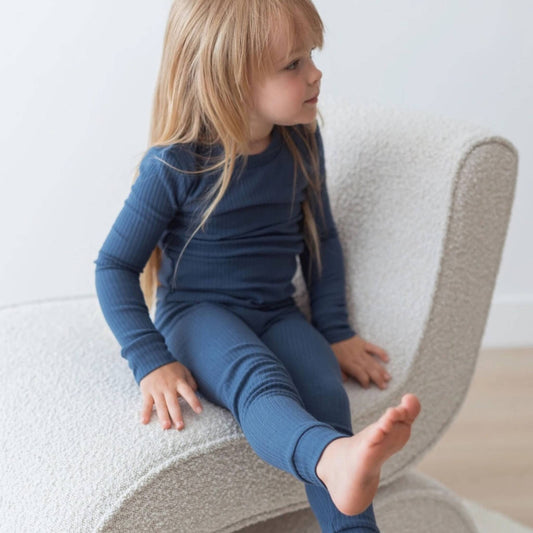
10 Essential Sleep Strategies for Infants and Toddlers
Share
Household rest is easier with hacks like white noise machines and streaming in utero heartbeat sounds to the Calm app children's stories and more.
Getting your little one to sleep soundly through the night can be a challenge for many parents. Between night wakings, nap struggles, and the general unpredictability of a child’s sleep patterns, it can often feel like a never-ending battle. The good news is that with a few strategic hacks, you can help establish healthier sleep habits and create an environment that allows for more restful nights.
The moms at Young Eden have put together the practical sleep hacks you might want to try with babies and young kids that can help everyone in the family sleep better.
1. Create a Consistent Bedtime Routine
One of the most effective sleep hacks for babies and toddlers is establishing a consistent bedtime routine. Little ones thrive on routine, and a predictable sequence of events before bedtime helps signal to their brains that it’s time to wind down. This can include activities such as a warm bath, a calming massage, reading a book, and dimming the lights.
For babies, try to keep bedtime rituals simple, like swaddling, gentle rocking, or singing a lullaby. For toddlers and preschoolers, you might add a story or a calm game before transitioning to bed. Consistency is key—following the same steps every night will help your child understand that bedtime is approaching.
2. Set a Sleep-Friendly Environment
Creating a sleep-friendly environment is another important hack that can significantly improve your child’s sleep quality. Make the room dark, quiet, and cool to encourage a deeper sleep. Consider using blackout curtains to block out any light that could disrupt sleep, and a white noise machine or fan to mask any household sounds or external noise.
One little known hack for newborns is to use the sound of a familiar in utero heartbeat that puts them at ease to sleep soundly. Toddlers and older children also love the variety of excellent audio children’s sleep stories in the Calm app.
A cool room temperature (around 68–72°F) is ideal for sleep, so adjust the thermostat accordingly. Babies, in particular, should be dressed appropriately for sleep—too many layers can lead to overheating, which could disturb their sleep.
3. Watch for Sleep Cues
Babies and young kids often give subtle cues when they’re ready for sleep. Tiredness signals may include rubbing their eyes, yawning, or becoming fussy. It’s important to recognize these cues and act quickly—delaying bedtime even by a few minutes can make the process more difficult.
If you miss the window of opportunity and your child becomes overtired, it can be harder for them to fall asleep and stay asleep. So, aim to put your child to bed as soon as they show signs of sleepiness.
4. Use the Power of Natural Light
Natural light plays a crucial role in regulating the body’s internal clock, and exposure to sunlight during the day helps promote better sleep at night. In the morning, open the blinds and let in the natural light to help signal to your child’s body that it’s time to wake up.
During the evening, gradually reduce exposure to bright lights as bedtime approaches. Dim the lights an hour or two before bed to help their body begin to wind down. Avoid using screens, as the blue light emitted by phones and tablets can interfere with melatonin production, making it harder for them to fall asleep.
5. Avoid Stimulants Before Bedtime
To help your child settle into sleep more easily, avoid stimulating activities in the hour leading up to bedtime. This includes anything that could rev up their energy, like playing energetic games, watching exciting TV shows, or eating sugary snacks. Instead, try more relaxing activities like reading a quiet story, doing puzzles, or engaging in calm play.
For older toddlers and preschoolers, avoid any caffeinated drinks like soda or chocolate late in the day, as they can interfere with sleep.
6. Create a Safe and Secure Sleep Space
For both babies and young children, a sense of security can make all the difference in achieving restful sleep. If your baby is transitioning from a crib to a toddler bed, consider using a nightlight or a favorite stuffed animal to help them feel secure.
For older kids, a "sleep buddy" like a blanket or plush toy can provide comfort. The presence of familiar objects helps create a sense of safety and makes it easier for children to relax and fall asleep on their own.
7. Teach Your Baby to Self-Soothe
Teaching your baby to self-soothe can make a significant difference in their ability to fall back asleep independently during the night. This doesn’t mean letting them cry it out, but rather encouraging them to find their own comfort mechanisms, such as sucking their thumb or gently rocking themselves to sleep.
For older babies, gradually reducing your involvement in the bedtime process can help them learn to fall asleep without being rocked or held. Start by soothing them until they’re drowsy, then put them down while they’re still awake. This can promote self-soothing skills and better sleep habits.
8. Be Patient with Sleep Transitions
It’s normal for sleep patterns to shift during different developmental stages. As your baby grows, they may go through sleep regressions, such as when they learn to crawl or walk. Similarly, toddlers may experience disruptions during transitions like moving to a big kid bed or potty training. During these times, it’s important to be patient and understanding as your child adjusts to these new changes.
Consistency, along with reassurance and comfort, is key during these transitions. Sleep training methods like the Ferber Method or Gentle Sleep Training can also be helpful, but be sure to choose a method that aligns with your parenting style and your child’s temperament.
9. Use Dream Feeds for Babies
If your baby is still in the stage where they need nighttime feedings, you can consider a "dream feed" as a sleep hack. A dream feed involves gently feeding your baby while they’re still asleep or drowsy, typically before you go to bed. This can help extend the time between nighttime feedings and promote longer stretches of sleep, especially in younger babies who haven’t yet slept through the night.
10. Stay Calm and Consistent
Lastly, staying calm and consistent is crucial for creating a positive sleep experience. Children are sensitive to their parents' emotions, so if you’re stressed or anxious about bedtime, they may pick up on that and struggle to settle themselves. Be patient, stick to your routine, and offer comfort as needed. With time, your little one will develop healthier sleep habits and begin to rest more soundly.
By implementing these sleep hacks and adjusting your routine, you can help your baby or young child develop better sleep habits. While each child is different and it may take some trial and error, these strategies can help set the foundation for more restful nights for the whole family.








